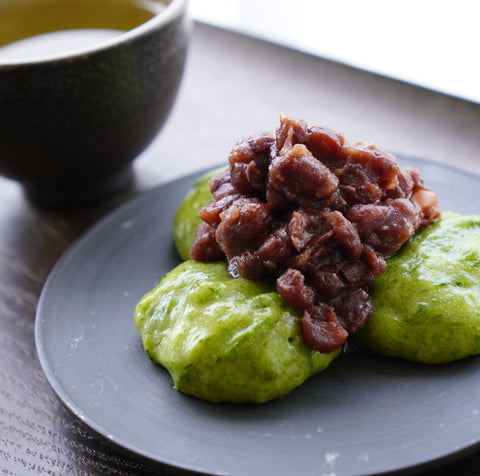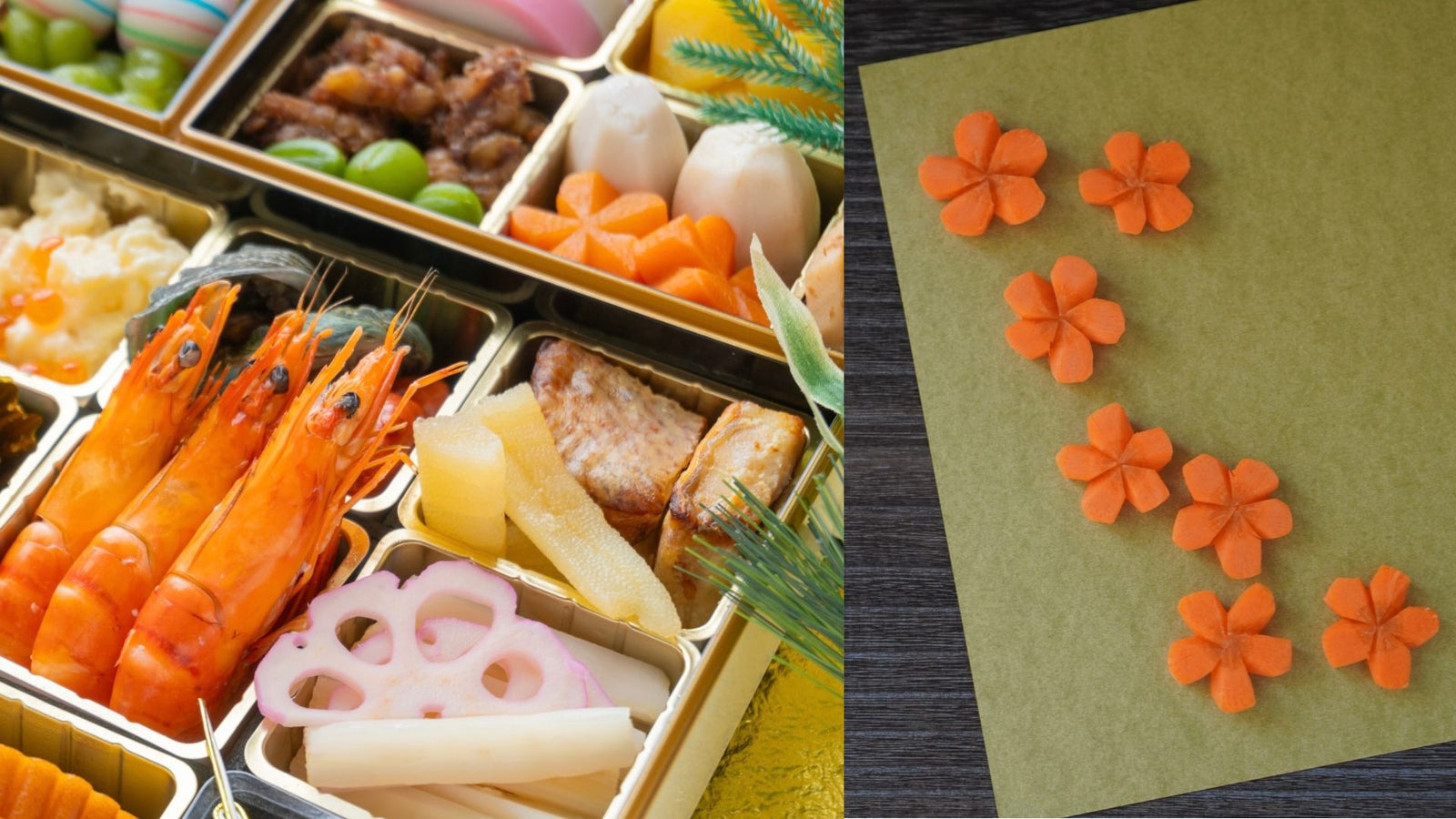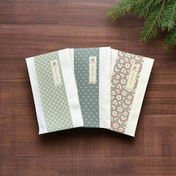There are some kinds of vegetable carvings called Kazari-giri in Japanese cuisine, which is made for decorating and adding a seasonal feeling to dishes.
In the New Year, we often see attractive shaped carrots in some dishes, such as in Osechi Ryori, dishes for a New Year. (The photo's shown above), which is one type of the vegetable carvings.
There is also a New Year's dish called zoni or ozoni, soup with mochi (rice cake) and vegetables and/or fish.

Zoni
Do you know what the shape represents and what it means?
Nejiri-Ume
This particular vegetable carving is called nejiri-ume, literally means twisting-ume, which shows the shape of blossom of ume ( Japanese plum or also called Japanese apricot).

Ume blossoms
People in the old days admired ume blossom as a lucky charm, as ume blossoms at the very beginning of spring earlier than any spring flowers, and so, ume is essential for spring celebrations.
By adding ume-shaped vegetables, a spring feeling is also added to dishes. Daikon radish is also sometimes made in to the ume-shape.
The carrot or daikon radish are usually boiled simply with salt, and used as a garnish on dishes. As well as the New Year dishes, there are added into nabe (hot pot), stew, bento(lunch) box, and beside of meat stakes, etc.
Chefs of Japanese cuisine will make it perfectly with a knife. People at home often use the the mold of ume blossom for the first step. It's not very likely that you have the ume mold at home, so I'll show you an easy way of making without one. Once you get it, you can make them quickly. The shape might not be as perfect like chef makes. but I'm sure the carving will make a nice surprise for your friends and family!
How to make Nejiri-ume
Ingredient
Carrot
Equipment
A small knife
Instructions
- Slice carrot into 5-7mm thick.
- Cut the slice to a star shape. Marking the shape with a knife before cutting will be easier.

- Score 5 lines a 1/3 depth of the slice. Lines should be as shown in the photo below.

- Cut diagonally towards to each line in a V shape.


- Trim the edges to make a round shape.

Make soup or stew, meat sauce with leftover pieces of the carrots!
Learn a new technique for your cooking, and enjoy it.
Japanese Cuisine Articles
Kombu (Kelp), the Role in the Japanese Diet

Yomogi(よもぎ) -Japanese Mugwort , How to Make Yomogi Mochi

Seasonal Ume (梅,Japanese Plum) Preserving
Today's Recommendation
As well as green tea, rice is also naturally grown in Shizuoka. Genmaicha, made with both green tea and toasted rice, from Shizuoka, has a mild taste and will help you relax after having heavy food as part of your winter celebrations.




